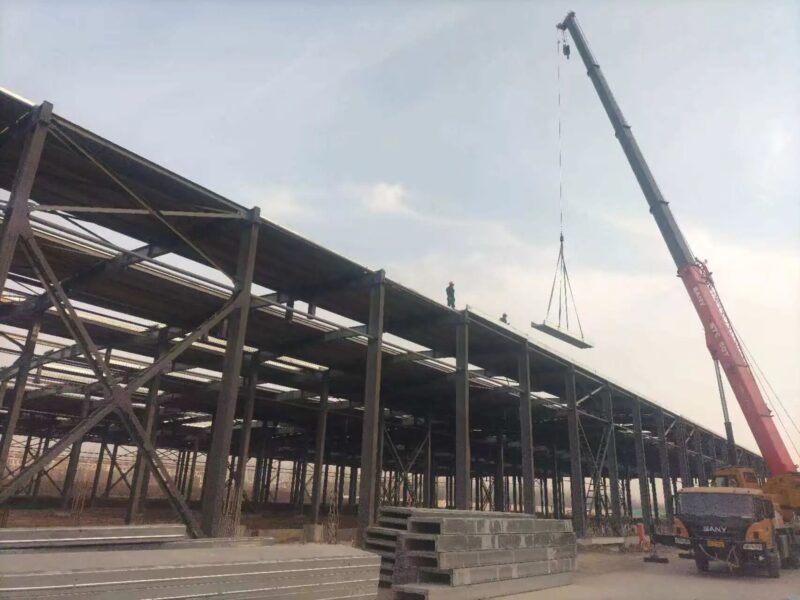
Prefabricated Office Buildings: Smart, Sustainable, and Scalable Solutions for Modern Workspaces
The modern workplace is undergoing a dramatic transformation. Businesses today need office spaces that are flexible, fast to deploy, and environmentally sustainable. Traditional concrete buildings often fail to meet these expectations—they require long construction timelines, involve high costs, and offer limited adaptability for changing business needs.
Prefabricated office buildings are emerging as a smarter alternative. Built using modular components manufactured off-site, these structures combine speed, efficiency, and customization. From corporate offices to remote project sites, prefabricated offices are redefining how companies build and expand their work environments.
What Are Prefabricated Office Buildings?
Prefabricated office buildings, also known as modular offices, are made from pre-engineered steel frames and insulated wall panels. Each section is fabricated in a controlled factory environment, ensuring consistent quality, precision, and faster delivery.
Once delivered to the project site, modules are assembled quickly, reducing construction time by up to 70%. These buildings can serve as temporary offices, permanent headquarters, or expandable business hubs, depending on project requirements.
Advantages of Prefabricated Office Buildings
- Rapid Construction and Deployment
Prefabricated components are ready for on-site installation upon delivery, minimizing disruption and enabling occupancy in weeks instead of months. - Cost Savings
Controlled factory production reduces material waste and labor costs. Businesses save both time and money without compromising quality. - Flexibility and Scalability
Modular offices can be easily expanded, relocated, or reconfigured as business needs evolve. - Sustainability
Prefabrication minimizes construction waste, uses recyclable materials, and supports green building standards like LEED certification. - Design Customization
Modern prefabricated offices are not limited to simple boxes—they can include multi-story layouts, glass façades, meeting rooms, and energy-efficient systems. - Quality and Durability
Built from high-grade steel and precision-engineered components, prefabricated offices withstand weather challenges and require minimal maintenance.
Applications Across Industries
Prefabricated office buildings serve a wide range of industries and business scenarios:
- Corporate Offices: Permanent or semi-permanent workspaces for small and medium enterprises.
- Construction Sites: Temporary offices for engineers, managers, and project coordinators.
- Industrial Parks: Administrative buildings for factories, logistics hubs, and warehouses.
- Education and Healthcare: Modular administrative centers for schools, clinics, or hospitals.
- Remote Operations: Mining, oil, or renewable energy projects requiring fast-deploy offices.
Design Features for Modern Businesses
Prefabricated office buildings are designed to combine comfort, functionality, and aesthetics:
- Energy-Efficient Insulation: Keeps interiors cool in summer and warm in winter.
- Glass and Panel Integration: Maximizes natural light and creates a professional appearance.
- Smart Layout Planning: Includes open offices, meeting areas, rest zones, and technical rooms.
- High-End Finishing Options: From vinyl flooring to acoustic ceilings and decorative façades.
- Sustainable Systems: Solar panels, rainwater collection, and LED lighting for eco-friendly operation.
Case Studies
- Tech Startup Office (Singapore):
A two-story prefabricated office was completed in just six weeks, integrating modern interiors and smart energy systems. - Construction Management Hub (Australia):
Modular offices served as on-site headquarters for a major infrastructure project—offering meeting spaces, offices, and storage in one complex. - Industrial Park Administration (UAE):
A permanent prefabricated steel office complex reduced energy costs by 25% and construction time by 60%.
Why B2B Clients Prefer Prefabricated Office Buildings
For B2B clients, prefabricated office buildings deliver measurable advantages:
- Speed: Quick assembly reduces downtime and accelerates business setup.
- Cost Efficiency: Controlled production ensures predictable budgeting.
- Scalability: Modular design supports growth and reconfiguration.
- Brand Image: Custom designs reflect corporate identity and professionalism.
- Sustainability: Environmentally conscious materials meet global green standards.
In today’s competitive business environment, time and flexibility are crucial—prefabricated offices provide both.
Conclusion
Prefabricated office buildings represent the future of workplace infrastructure—combining innovation, speed, and sustainability. For B2B clients, they offer a modern, cost-effective, and eco-friendly solution adaptable to any business environment.
Whether you’re building a startup office, managing a remote project, or expanding your corporate presence, prefabricated offices deliver unmatched efficiency and long-term value.
